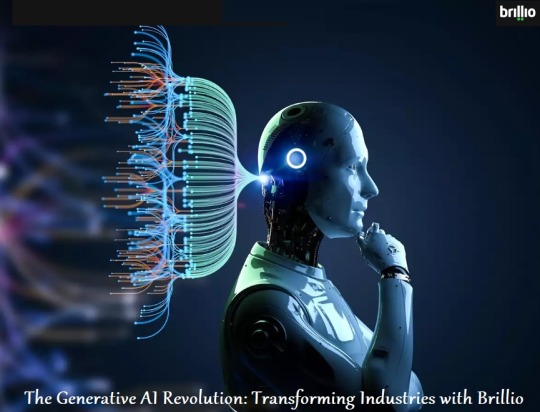#Machine learning in banking
Explore tagged Tumblr posts
Text
#AI in financial services#Machine learning in banking#software product engineering services#software product engineering company#technology consulting solutions
0 notes
Text




There is no meaning for life in gaza lots of displaced people and families and children there tow photos here for the school where family members stay right now and can imagine the suffering when they just try to do their routine thing .and the othere tow photos are for the area around the school no need to explain how bad it is .
Help me evacuate my family from Gaza somehow .
Small things do a lot for me .
#gaza genocide#free gaza#gaza#free palestine#genocide#palestine#gaza strip#free west bank#joe biden#donald trump#machine learning
115 notes
·
View notes
Text
I've only been a teto enjoyer for like a couple years now but it cannot be overstated the world she means to me
#rambumbles#I only really started listening to things with her when her synthv bank dropped but then got really into her utau stuff#learning about her arc.. seeing her succeed so hard has me clapping and cheering that's her she's winning !!!!!#honestly still prefer her utau bank sometimes. it works better for harder/stronger lyrics imo#also I like when the singing robots sound like robots#anyways. shoutouts to daemon/doll. album of all time. machine love by jamiep you are everything to me.
6 notes
·
View notes
Text




#IBAN Bank of Palestine Dollar PS68PALS045511445200993100000#artificial intelligence#coding#devlog#html#indiedev#linux#machine learning#rpg maker#software engineering#unity
2 notes
·
View notes
Text
passes away forever
#vocal synth wip#im outta town rn so im using my school laptop which is just a really old thinkpad LOL#and honestly its a great little thing decently powerful BUT it can NOT deal with machine learning voicebanks#so standard banks it is <3 i already use benbu like my life depends on it it's chill#but this does mean that any svp wips you see from me for the next little bit will be untuned because i am LAZY and i do not like#synthv's standard bank autopitch. the ai banks it depends some i like more than others. i really love rikkas#but the standard banks..... you gotta tune those urself that autopitch is ROUGH#its fun using seikas standard lite as my svp making voice tho.. she has like#this almost defoko like edge to her. i did bump up her breathiness a little but even before i did it was just an essence of defoko noise#im feeling it tho. the svp making adventures. the other day i googled how harmonies work. i still dont understand <3#BUT i do get that three semitones down or up is a really common harmony so any songs i wanna do that use simple ones like that...#i should be able to.... i should....#luckily this song from what i can hear has no harmonies. for a second i thought there was but im realizing its just strong delay <3
2 notes
·
View notes
Text
youtube
Welcome to Imarticus Learning! In this video, we break down the most important data terms you need to know in Machine Learning. If you're just starting out or already working in the field, understanding these basic concepts is a must. You’ll learn what data means in Machine Learning, the difference between labeled and unlabeled data, and how to work with it. We also explain key ideas like features, labels, datasets, and data splits in a very simple way. You’ll get a clear picture of how data is prepared and used in real-world ML models. This is a great first step if you're looking for the best machine learning course that makes learning easy and useful. At Imarticus Learning, we focus on teaching with real examples, expert support, and flexible learning options to help you succeed in your career. Let’s start your journey into the world of AI and ML today!
0 notes
Text
Researchers develop unsupervised machine learning method to improve fraud detection in imbalanced datasets

- By Nuadox Crew -
Researchers at Florida Atlantic University have developed a new machine learning method that significantly improves fraud detection by generating accurate class labels from severely imbalanced datasets—common in fraud cases where fraudulent events are rare.
Unlike traditional methods that rely on labeled data, their unsupervised technique works without prior labeling, cutting costs and addressing privacy concerns.
Tested on large real-world datasets (European credit card transactions and Medicare claims), the method outperformed the widely-used Isolation Forest algorithm by minimizing false positives and requiring less human oversight. It combines three unsupervised learning models with a percentile-gradient approach to isolate the most confidently identified fraud cases, enhancing accuracy and efficiency.
Published in the Journal of Big Data, this approach offers scalable, low-cost fraud detection for high-risk industries like finance and healthcare, and was recognized with a Best Student Paper Award at the IEEE ICTAI 2024 conference. Future work will focus on automating optimal label selection to further boost scalability.
Read more at Florida Atlantic University (FAU)
Scientific paper: Mary Anne Walauskis et al, Unsupervised label generation for severely imbalanced fraud data, Journal of Big Data (2025). DOI: 10.1186/s40537-025-01120-x
Related Content
Small Data approaches provide nuance and context to health datasets
Other Recent News
New oral medication shows promise against antibiotic-resistant gonorrhea.
Medical imaging radiation may be responsible for 5% of cancer cases in the U.S.
0 notes
Text
3 Benefits of Bank Fraud Detection Using Machine Learning
Bank fraud remains a growing concern in the financial sector, with criminals adopting increasingly sophisticated tactics. To stay ahead, financial institutions are turning to machine learning (machine learning) for fraud detection. This technology revolutionises how banks identify and prevent fraudulent activities. Here are three key benefits of using machine learning in fraud detection.

1. Real-Time Fraud Detection:
Machine learning algorithms analyse massive amounts of data in real time, identifying suspicious patterns or anomalies as they occur. Unlike traditional methods, which often rely on retrospective analysis, machine learning offers proactive fraud detection. This swift response minimises financial losses and protects customer accounts from potential breaches.
2. Improved Accuracy and Reduced False Positives:
Manual fraud detection methods can result in false positives, leading to customer dissatisfaction and operational inefficiencies. Machine learning models continuously learn and adapt to evolving fraud trends, enabling them to distinguish genuine transactions from fraudulent ones with greater precision. This reduces false alarms, allowing banks to focus resources on actual threats.
3. Cost Efficiency and Scalability:
By automating fraud detection processes, machine learning reduces the reliance on manual interventions, cutting operational costs. Additionally, machine learning systems are scalable for banking fraud detection, making them suitable for banks of all sizes, whether handling a few transactions or millions daily.
Embracing machine learning empowers banks to stay ahead of fraudsters, ensuring customer trust and operational efficiency in an ever-evolving financial landscape. The best you can do is to get connected with a reliable software provider. Request a demo today!
0 notes
Text
AI technology and the future of humans
AI technology and the future of humans: Artificial Intelligence (AI) has rapidly evolved from a futuristic concept to an integral part of our daily lives.
AI technology and the future of humans: Artificial Intelligence (AI) has rapidly evolved from a futuristic concept to an integral part of our daily lives. From smart home devices to advanced data analytics, AI is revolutionizing various sectors and reshaping how we interact with technology. In this article, we’ll explore the rise of AI, its applications, and how it’s transforming our…
#AI and creativity#AI and ethics#AI and job displacement#AI and sustainability#AI applications in healthcare#AI for business#AI in banking#AI in business#AI in customer service#AI in education#AI in entertainment#AI in transportation#AI technology#AI vs. machine learning#Artificial Intelligence (AI)
0 notes
Text
#Technological Displacement Part 11 Machine Learning#AI#Sponsored by: Robert F Geissler| MLO#NMLS ID 2605994#Motto Mortgage Invictus NMLS ID 2581029#Each office is independently owned and operated#9 Court Theophelia Saint Augustine#Florida 32084#Direct Line 609-774-1764#[email protected]#Apply now: http://www.robertfgeissler.com#Equal Opportunity Housing#We will never request wire information via email. Please contact your LO if you get any message asking for bank account details#personal documents/information#or your password to any system online. Keep your identity safe by never clicking any links in a suspicious email.#Disclaimer#The content provided on this Mortgage 101 YouTube channel is for informational and educational purposes only and should not be construed as#While we strive to provide accurate and up-to-date information#we make no representations or warranties of any kind#express or implied#about the completeness#accuracy#reliability#suitability#or availability of the information#products#services#or related graphics contained in our videos for any purpose. Any reliance you place on such information is strictly at your own risk.#Investing in financial markets involves risk#and you should be aware of your risk tolerance and seek professional advice where necessary. Past performance is not indicative of future r
1 note
·
View note
Text
#artificial intelligence#machine learning#banking#low code#supercharged banking#hyper personalization
1 note
·
View note
Text
The Generative AI Revolution: Transforming Industries with Brillio
The realm of artificial intelligence is experiencing a paradigm shift with the emergence of generative AI. Unlike traditional AI models focused on analyzing existing data, generative AI takes a leap forward by creating entirely new content. The generative ai technology unlocks a future brimming with possibilities across diverse industries. Let's read about the transformative power of generative AI in various sectors:
1. Healthcare Industry:
AI for Network Optimization: Generative AI can optimize healthcare networks by predicting patient flow, resource allocation, etc. This translates to streamlined operations, improved efficiency, and potentially reduced wait times.
Generative AI for Life Sciences & Pharma: Imagine accelerating drug discovery by generating new molecule structures with desired properties. Generative AI can analyze vast datasets to identify potential drug candidates, saving valuable time and resources in the pharmaceutical research and development process.
Patient Experience Redefined: Generative AI can personalize patient communication and education. Imagine chatbots that provide tailored guidance based on a patient's medical history or generate realistic simulations for medical training.
Future of AI in Healthcare: Generative AI has the potential to revolutionize disease diagnosis and treatment plans by creating synthetic patient data for anonymized medical research and personalized drug development based on individual genetic profiles.
2. Retail Industry:
Advanced Analytics with Generative AI: Retailers can leverage generative AI to analyze customer behavior and predict future trends. This allows for targeted marketing campaigns, optimized product placement based on customer preferences, and even the generation of personalized product recommendations.
AI Retail Merchandising: Imagine creating a virtual storefront that dynamically adjusts based on customer demographics and real-time buying patterns. Generative AI can optimize product assortments, recommend complementary items, and predict optimal pricing strategies.
Demystifying Customer Experience: Generative AI can analyze customer feedback and social media data to identify emerging trends and potential areas of improvement in the customer journey. This empowers retailers to take proactive steps to enhance customer satisfaction and loyalty.

3. Finance Industry:
Generative AI in Banking: Generative AI can streamline loan application processes by automatically generating personalized loan offers and risk assessments. This reduces processing time and improves customer service efficiency.
4. Technology Industry:
Generative AI for Software Testing: Imagine automating the creation of large-scale test datasets for various software functionalities. Generative AI can expedite the testing process, identify potential vulnerabilities more effectively, and contribute to faster software releases.
Generative AI for Hi-Tech: This technology can accelerate innovation in various high-tech fields by creating novel designs for microchips, materials, or even generating code snippets to enhance existing software functionalities.
Generative AI for Telecom: Generative AI can optimize network performance by predicting potential obstruction and generating data patterns to simulate network traffic scenarios. This allows telecom companies to proactively maintain and improve network efficiency.
5. Generative AI Beyond Industries:
GenAI Powered Search Engine: Imagine a search engine that understands context and intent, generating relevant and personalized results tailored to your specific needs. This eliminates the need to sift through mountains of irrelevant information, enhancing the overall search experience.
Product Engineering with Generative AI: Design teams can leverage generative AI to create new product prototypes, explore innovative design possibilities, and accelerate the product development cycle.
Machine Learning with Generative AI: Generative AI can be used to create synthetic training data for machine learning models, leading to improved accuracy and enhanced efficiency.
Global Data Studio with Generative AI: Imagine generating realistic and anonymized datasets for data analysis purposes. This empowers researchers, businesses, and organizations to unlock insights from data while preserving privacy.
6. Learning & Development with Generative AI:
L&D Shares with Generative AI: This technology can create realistic simulations and personalized training modules tailored to individual learning styles and skill gaps. Generative AI can personalize the learning experience, fostering deeper engagement and knowledge retention.
HFS Generative AI: Generative AI can be used to personalize learning experiences for employees in the human resources and financial services sector. This technology can create tailored training programs for onboarding, compliance training, and skill development.
7. Generative AI for AIOps:
AIOps (Artificial Intelligence for IT Operations) utilizes AI to automate and optimize IT infrastructure management. Generative AI can further enhance this process by predicting potential IT issues before they occur, generating synthetic data for simulating scenarios, and optimizing remediation strategies.
Conclusion:
The potential of generative AI is vast, with its applications continuously expanding across industries. As research and development progress, we can expect even more groundbreaking advancements that will reshape the way we live, work, and interact with technology.
Reference- https://articlescad.com/the-generative-ai-revolution-transforming-industries-with-brillio-231268.html
#google generative ai services#ai for network optimization#generative ai for life sciences#generative ai in pharma#generative ai in banking#generative ai in software testing#ai technology in healthcare#future of ai in healthcare#advanced analytics in retail#ai retail merchandising#generative ai for telecom#generative ai for hi-tech#generative ai for retail#learn demystifying customer experience#generative ai for healthcare#product engineering services with Genai#accelerate application modernization#patient experience with generative ai#genai powered search engine#machine learning solution with ai#global data studio with gen ai#l&d shares with gen ai technology#hfs generative ai#generative ai for aiops
0 notes
Text
Can Blockchain Technology replace Chartered Accountants?
Auditing is undergoing a seismic shift, largely driven by the relentless march of blockchain technology. Blockchain technology is not replacing auditors; it’s empowering chartered accountants. The future of audit lies in a collaborative approach. Technology like blockchain handles tedious tasks like reconciliation through secure, shared ledgers. This frees up CAs from the time-consuming task of ensuring data accuracy, allowing them to focus on higher-level analysis and providing valuable insights that directly impact client decision-making.
This powerful synergy between Chartered Accountants and blockchain technology unlocks a new era of auditing:
⏩Enhanced Efficiency: Streamlined processes through automated tasks like reconciliation free up valuable Chartered Accountant time. This translates to faster audits and reduced costs for both CAs and their clients.
⏩Effective Risk Management: Real-time access to secure blockchain data allows for continuous auditing. This empowers Chartered Accountants to identify potential issues early on, enabling proactive risk management for clients.
⏩Perceptive Analysis: Chartered Accountants leverage their expertise to interpret the vast amounts of secure data generated by blockchain. This deeper financial health insight empowers them to provide clients with more perceptive analysis and strategic guidance.
This collaborative approach ultimately strengthens trust and transparency in the financial markets. Ready to Lead the Audit Revolution? Learn how Blockchain Empowers Chartered Accountants
#blockchain#technology#artificial intelligence#machine learning#chartered accountants#software#trending#bank audit#internal audit#india#finance
0 notes
Text
0 notes
Text
Bruce is a overprotective and kind of strict parent, but he is very lax in some domains where other parents wouldn't. Here are some examples:
His kids stealing money from him. You will never catch Bruce Wayne lecturing his kids for taking his money. In the Arkhamverse, Jason steals 5 millions from Bruce's bank account to buy his army, and the problems for Bruce are: he didn't know it was Jason so it stressed him a bit, and Jason used it to buy an army.
Stealing from him in general. What is his is theirs. Unless it's dangerous. (Cars are death machines for his anxious self, which is why buying another batmobile for the young justice is not acceptable, or is kids taking it for a ride. He did made Redbird for Tim as a gift for when he got his license.)
Stealing from the cops (he has done it himself so many times)
Stealing money from rich people. In Knightfall, Bruce meets a British vigilante named Hood who steals from the rich to give to the poor, and Bruce had NO problems with that. He likes the young man. Stealing possessions is an issue tho. (Dick should follow his Robin Hood's dream, his father is fine with that)
Hacking into government facilities or anything really. Unless it's to harm an innocent civilian, like a classmate, he will not say anything. Hacking the FBI? Good. Hacking a russian mafia? Ok. As long as they do it safely and follow Barbara's instructions, it's fine.
Lying to him. Bruce is always impressed when he realizes one of his kids lied to him and he believed them. He's the Batman, after all, they have been able to fool the Batman. When he learns that Tim invented a fake uncle, he is proud of him and he tells him such, because he made the Batman believed it.
#bruce wayne#batman#batfam#dick grayson#jason todd#tim drake#damian wayne#cass cain#duke thomas#dc comics#my ramblings#bruce “what are you doing?” tim “hacking the pentagon” bruce “that's great sweetie”#my examples based in canon does not mean that canon always follow this logic it's my interpretation#I'm saying that before I get attacked#also as someone with an anxiety disorder: cars are death machines and I don’t trust half of the drivers on this earth
6K notes
·
View notes
Text
Software developers are implementing. advanced cybersecurity measures such as data encryption and secure transactions.
#banking app#finance#software development#app development#code#developer#web development#fintech technology#technology#finances#artificial intelligence#machine learning ai#ai machine learning
0 notes